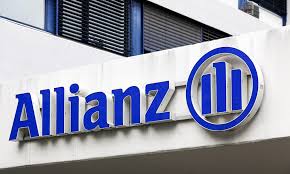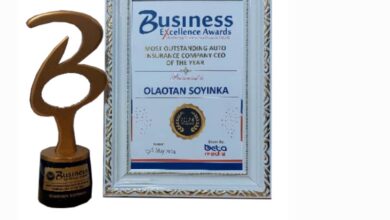Construction Companies To See Robust Growth,“New Age” Risks Post-Covid Says Allianz

*Current shortage of materials and skilled labour adds to long-term challenges around new design, materials and building methods driven by sustainability and net-zero strategies.
*AGCS analysis of €11bn worth of construction and engineering claims over five years identifies top causes of loss by value: fire and explosion (26%), faulty design/poor workmanship (20%) and natural hazards (20%).
*Construction companies need to improve cyber resilience and protect buildings sites against flash flooding and other extreme weather events driven by climate change. “Out of hours” water damage a major source of loss.
The global construction market is set for a sustained period of strong growth post-Covid-19, driven by government spending on infrastructure and the transition to a net zero society. However, the switch to more sustainable buildings and infrastructure, the upscaling of clean energy facilities and the adoption of modern building methods will transform the risk landscape, with radical changes in design, materials and processes. These challenges add to currently-stressed supply chains, shortages in materials and labor and increased costs, which all come against the backdrop of years-long tight margins in the industry.
A new report from Allianz Global Corporate & Specialty (AGCS), ‘Managing the new age of construction risk,’ explores both acute and long-term risk trends for the construction sector.
“Covid-19 has brought about a new age for the construction industry,” says Yann Dreyer, Global Practice Group Leader for Construction in the global Energy & Construction team at AGCS. “While construction projects continued during the pandemic, and further growth is to come, the overall environment has changed fundamentally. The industry faces new challenges around supply chain volatility and spiking material costs, skilled workforce shortages and the heightened focus on sustainability. In addition, the accelerated deployment of cost-cutting strategies and implementation of new technologies and designs may well result in accelerated risks for construction companies and insurers alike. Continued risk monitoring and management controls will be key moving forward. Together with our clients, we will help manage these challenges as AGCS is committed to the construction industry as a key target sector for our growth initiatives.”
The strong growth outlook for the sector is based on a number of factors, such as rising populations in emerging markets and significant investment in alternative forms of energy such as wind, solar and hydrogen, as well as power storage and transmission systems. The shift to electric transport will require investment in new plants and battery manufacturing facilities and charging infrastructure. Buildings are not only expected to improve their carbon footprint, but will also require improved coastal and flood defences and sewage and drainage systems in many catastrophe-exposed regions in response to more frequent extreme weather events. At the same time, governments in many countries are planning major public investments in large infrastructure projects to both stimulate economic activity after the pandemic crisis and drive the low carbon transition. In the US, a $1 trillion+ infrastructure package touches everything from bridges and roads to the nation’s broadband, water and energy systems. At the same time it has announced plans to invest in a number of large infrastructure projects around the world in 2022 in response to China’s ambitious Belt And Road Initiative, which could stretch from East Asia to Europe. Four countries – China, India, US and Indonesia are expected to account for almost 60% of global growth in construction over the next decade..
Downsides of the construction boom
The expected boom brings specific challenges in addition to benefits. In the medium term, sudden surges in demand could put supply chains under additional pressure and exacerbate existing shortages of materials and skilled labor, causing schedule and cost overruns. In addition, many in the industry may need to accelerate the implementation of efficiency and cost-control measures if profit margins have been impacted in the Covid-19 economy, which can often impair quality and maintenance levels and increase susceptibility to errors. Analysis by AGCS shows that design defects and poor workmanship are one of the leading causes of construction and engineering losses, accounting for around 20% of the value of almost 30,000 industry claims examined between 2016 and the end of 2020.
The enhanced sustainability and net zero focus will strongly influence the traditional risk landscape in the construction sector. According to the UN Environment Programme, buildings and the construction industry account for 38% of all energy-related carbon dioxide emissions. In order to cut carbon emissions, existing buildings will need to be refurbished and repurposed. Additionally, new materials and construction methods will need to be introduced across the market in relatively short periods of time. This will bring an increased risk of defects or may have unexpected safety, environmental or health consequences. For example, as a sustainable and cost-efficient material, the use of timber in construction has increased in recent years. However, this has implications for fire and water damage risks. AGCS claims analysis shows that fire and explosion incidents already account for more than a quarter (26%) of the value of construction and engineering claims over the past five years – the most expensive cause of loss.
Upscaling clean energy – renewable risks
Expanding clean energy brings new risks, too. Offshore wind projects are growing in size, moving further out to sea and into deeper waters, meaning the costs associated with any delays or repairs is increasing. Offshore wind farms, as well as onshore wind and solar projects, can also be exposed to serial losses. A design or manufacturing fault in a turbine, for example, can impact many projects. There have also been large claims from faulty foundations in solar parks and farms. Repairs to undersea cables, which weigh thousands of tons and require special ships to lay, can take more than a year. An offshore converter station alone can cost as much as $1.5bn, comparable to an oil rig. A fire or explosion involving a converter, as seen recently in China, can result in a total loss.
“Huge investments in green energy will mean larger values at risk, while the rapid adoption of prototype technology, buildings methods and materials will require close cooperation between underwriting, claims and risk engineering in-house, as well as between insurers and their clients,” says Olivier Daussin, Construction Underwriting Lead in AGCS’s global Energy & Construction team.
The two sides of modular construction
Ultimately, modern building and production methods have the potential to radically transform construction, transferring more risk offsite and incorporating greater use of technology. Modular construction in particular provides many benefits such as controlled factory-based quality management, less construction waste, a construction timeline cut in half compared to traditional methods, and reduced disruption to the surrounding environment. However, it also raises risk concerns about repetitive loss scenarios. “There is an increased risk of serial losses with modular and prefabricated methods as the same part could be used across several projects before a fault is discovered,” Daussin explains.
The shortage of skilled labor in the construction industry is likely to further the trend towards offsite manufacturing and automation. At the same time, digitalization of construction creates cyber exposures which engineering and building companies need to strengthen their defenses against. Today, the numerous parties involved on a construction site are interconnected through various shared IT platforms, which increases their vulnerability. Cyber risks can range from malicious attempts to gain access to sensitive data, to disruption of project site control and associated theft, to supply chain disruption, to potential corruption of project design data, resulting in delays and ultimately reputational risk for parties involved.
Better protection of building sites against natural hazards and water damage
The need to reduce greenhouse gas emissions will not only drive a more sustainable approach to residential and commercial buildings as well as infrastructure but may also hasten the trend as the industry looks to achieve efficiencies and minimize waste. Construction sites also need to give more consideration to mitigate the impact of climate-driven events, such as wildfires, flash flooding and landslides. AGCS claims analysis shows that natural hazards is already the second most expensive cause of construction losses, behind fire and explosion, accounting for 20% of the value of claims over the past five years.
Meanwhile, water damage continues to be a major source of loss during construction. AGCS has seen a number of surprisingly large losses from leaks from pressurized water or fire systems that go undetected or occur out of business hours, on weekends or during periods when site personnel are not present. Water leak detection and monitoring systems can help reduce the frequency and severity of water damage, mitigating expensive repairs and project delays.
The appointment, according to a statement by AGCS made available to this medium today, will take effect from January 1, 2022.
Jody Yee, throughout his 18 years in corporate insurance and alternative risks transfer, has specialized in developing innovative solutions to drive growth and scale business development.
“Yee’s appointment follows the successful launch of the Financial Services industry practice in 2020 with Paul Schiavone as a Global Industry Solution Director. Both are reporting to Jeremy Sharpe as AGCS Global Head of Distribution. A similar role will be announced for the Construction industry in due course. AGCS has introduced these new global functions as part of the New AGCS transformation program to tailor product development, marketing and distribution to specific industries: Global Industry Solution Directors will build special risk expertise for their sectors and help developing bespoke solutions across all AGCS lines of business as well as other Allianz units.
“Henning Haagen, AGCS Board Member and Chief Regions & Markets Officer for AGCS’s business outside North America, welcomes Jody Yee joining the Global Distribution team: “We are eager to develop a special value proposition for our key target sectors and the Global Industry Solution Directors are at the heart of it. With Jody Yee we have found the perfect first advocate for clients and brokers in the technology, media and telecom space. He will drive the development of bespoke solutions for them in the wide Allianz universe – be it traditional insurance products, global programs and increasingly also alternative risk transfer and captive support.”
“The TMT sector is a very vibrant and valuable industry shaping the future for businesses and consumers alike on the strength of new “technologies and next-generation network. AGCS is targeting business opportunities in this sector, with a particular focus on hardware manufacturing, software & IT professional services, data services, telecom carriers and network operators as well as media,” the statement stated.
The statement stated further “Yee has worked in both traditional insurance underwriting as well as alternative risk transfer.
“In his most recent role as Managing Director and Global Practice Group Leader Cyber in the Alternative Risk Transfer (ART) division of AGCS, his focus was on business development, global captive fronting as well as structured and integrated transactions.
“He is passionate about applying technology to advance insurance offerings and led a team that designed and launched the first insurer technology insurance partnership for Google Cloud customers[PH(1] in March 2021. Jody joined AGCS in 2007 and has had several leadership roles in Finance and Underwriting in Munich, London and New York. In his new role, he will be based in London.”





